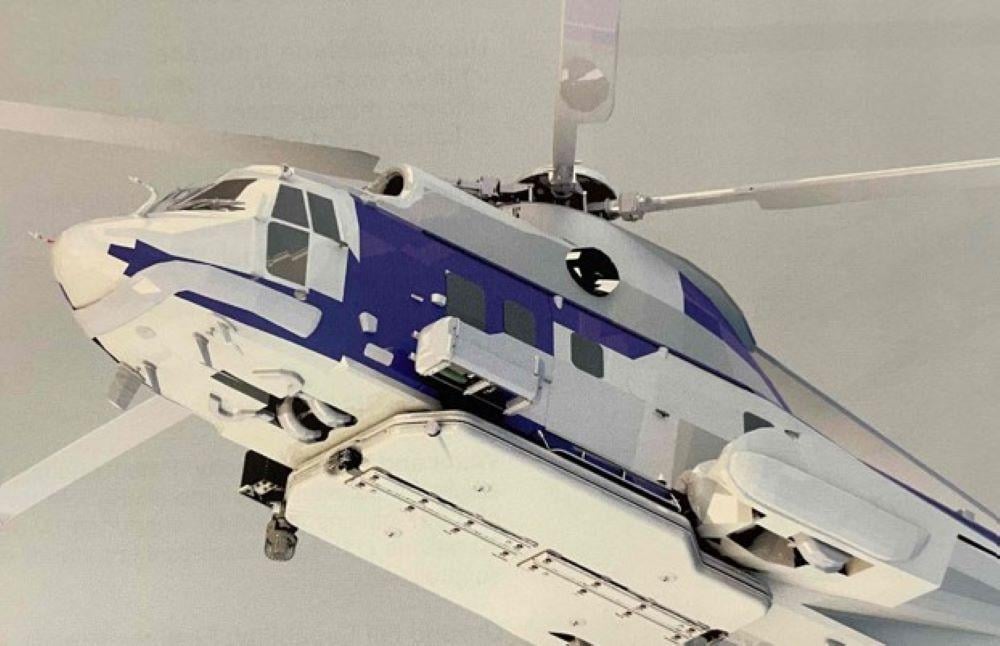This article is published in Aerospace Daily & Defense Report part of Aviation Week Intelligence Network (AWIN), and is complimentary through May 01, 2025. For information on becoming an AWIN Member to access more content like this, click here.

COLORADO SPRINGS—United Rotorcraft hopes to gain Transport Canada certification for its Airbus Super Puma firefighting modification package this summer, leading the way for initial operations in late 2025.
The Colorado-based company, which also developed the similar Firehawk modification for the Sikorsky S-70, is gearing up for ground and flight tests of the helicopter with an external belly-mounted water tank. The modification, which is designed to fit AS332/H225 and H215 variants of the Super Puma family, will be debuted by Manitoba-based launch operator Custom Helicopters.
The large composite tank, developed by Dart Aerospace, has a capacity for just more than 1,050 gal. (3,974.6 liters), augmented by an additional 30 gal. of foam concentrate. As well as the tank, which United says is designed to be installed or removed within 30 min., the modification includes a cockpit control panel and display system as well as a retractable snorkel pump capable of ingesting around 1,000 gal./min.
United Rotorcraft President Larry Alexandre says “we’re targeting a summer certification with Transport Canada, followed by validation with the FAA and EASA [European Union Aviation Safety Agency].” The latter clearance with the FAA is expected in late 2025 or early 2026.
“This will be a product that goes across not just the H225 and AS332, but the H215, as well. So, both new and used aircraft will be the target population—and that’s quite a big number. We all believe that there’s just not enough capacity for aerial firefighting, not just in the U.S., but globally, and especially for Type 1 helicopters,” Alexandre says.
Custom Helicopter President and CEO Jed Hanson says the fire attack system will significantly expand the company’s operational capability. “We firefight with the Super Puma today in North and South America and there’s other opportunities around the world as well. Currently, we’re using a bucket system, which does work. The tank just increases our capabilities. It’s really a different product that will allow us to fly faster and operate day and night. When fires are hot and there’s aircraft shortages around the world, being able to use your aircraft day and night makes a difference.”
Hanson adds that the capacity increase will also make a difference. “It’s a lot of water to drop—if you start doing 1,000 gallons per circuit and 10 circuits an hour—if the water source is close, that’s a lot of water you’re putting on fire. Now, there’s not much in the world that could do that.”





